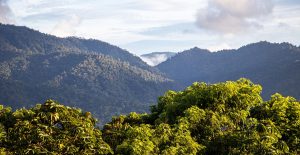
Barbilla National Park
The Barbilla National Park is a state park managed by SINAC, the National System of Conservation Areas.
Institutional Vision
The Barbilla National Park is renown for providing the conservation of biodiversity, watersheds, and ecosystem services, efficiently managed, with public participation in harmony with the Cabécares indigenous communities and other social actors, thereby contributing to the sustainable development of neighboring areas. 
The Mission
To manage holistically biodiversity conservation, water resources, functionality and interconnectivity of its ecosystems, in conjunction with the Cabécares indigenous communities that surround the Park and other social actors, in favor of present and future generations.
Against Environmental Harassment
The Project
Ruta 32 is the highway leading from the capital San José to Puerto Limón, passing through three Conservation Areas. This road is the country’s central axis of transport, and the two lanes are insufficient for its increasing frequency of use. Heavy-load trucks remain the only means of commercial transport, since the train service was disrupted in 1995. In an attempt to reduce state debts, then president José María Figueres Olsen closed down the national train company Incofer. North of the capital, the road crosses the Braulio Carillo National Park, part of the Área de Conservación Central.
Immediately after leaving the Braulio Carillo Park, the road is being extended to four lanes over the length of 107 kms. 
In this context, 26,000 trees, most of them native, had to be felled. The China Harbour Engeneering Company (CHEC), contractor of the road extension, committed to fund compensation measures for the overall value of 600,000 US$, in the form of an endowment fund over 10 years to be established by CCT. Under the management of CCT, a total of 36,000 trees are being newly planted. These seedlings will benefit formerly deforested areas within CCAs, but also farmers in the CBZ, who will thereby contribute to the establishment of biological corridors. Part of these trees to be given to local landowners are fruit trees with the potential to improve the livelihood of their owners.
The Barbilla National Park and its vicinity will benefit from part of the conservation payments.
The Project Proponent
The Centro Científico Tropical (CCT) was founded in 1962, by Leslie Holdridge, among others. In the context of CCT’s work, the Holdridge system of life zones was developed, which is at the basis of the IPCC above-ground carbon default values that the GCS uses for project value estimation. In 1972, CCT established the Monteverde Cloud Forest Preserve.
GCS News

GCS has a new website
Offenburg, October 2023 – The Global Conservation Standard has a new web presence. Besides a cleaner appearance, now you can view projects on the map, find pictures and more information on them.
© 2023 Global Conservation Standard
Lorem ipsum dolor sit amet, consectetur adipiscing elit. Ut elit tellus, luctus nec ullamcorper mattis, pulvinar dapibus leo.